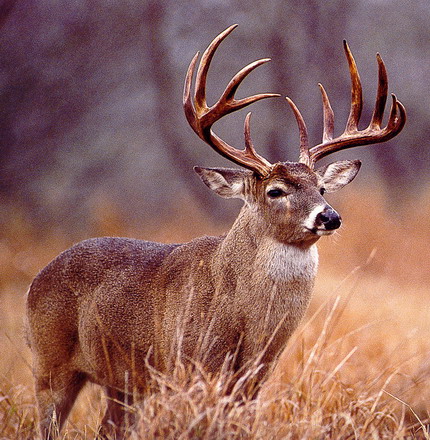The harvest rate of bucks will be dependent on the objectives of the land manager. One of the concerns of many first-time and veteran deer managers is the age structure of the buck segment of the population. If one of the deer management objectives is to produce bucks with larger antlers, bucks must be allowed to reach older ages, which means that the harvest of young, immature bucks should be heavily restricted.
Restricting hunters to mature bucks only is a good management strategy to harvest old bucks, but does not address inferior bucks that are young or middle-aged. As a result, these deer must be carefully removed. Deer body characteristics, in addition to antler characteristics, should be used to determine the relative age of bucks “on-the-hoof.” Let’s discuss two different management strategies for the buck segment of your deer population.
Under an “optimum” management strategy, 30% to 33% of the estimated buck population is harvested annually to allow for a generally acceptable level of hunter success while restricting pressure on bucks that allows a portion of the buck population to reach older age classes.
Under a “quality” management strategy, the total buck harvest is restricted to 20% or less of the estimated buck population. This limited harvest will result in lower hunter success rates, but will permit a significant portion of the buck population to reach maturity (4 1/2 years old and older) and increase the proportion of bucks in the population. This strategy, understandably, has only limited success on smaller tracts of land where hunting pressure on surrounding lands is moderate to heavy.
Of course, the total number of bucks under either strategy includes mature bucks, middle-aged culls, and young cull bucks. A cull buck on your property may not be the same as a cull buck on another property. The term “cull” is relative to what is available. However, a good rule of thumb in to harvest spike antlered (or even 4 points and less) bucks to remove poor quality bucks from the herd at an early age. Believe it or not, many yearling (1 1/2 year olds) bucks have 8 points or more on their first set of antlers!
Also, focusing hunting pressure on inferior bucks will reduce harvest of better quality bucks, which will impact the genetics of your breeding deer herd.


I have a ranch in northern Mexico and this year we have harvested about 11 spikes and inferior looking deer, although some of these deer look very young. The so-called experts in South Texas claim to shoot all spikes and 8 pointers. We have not shot 8 pointers because they look young and have nice racks. Am I doing the right thing? And also, what is it with deer without brow tines?
Alfonso, I agree with the practice of shooting spikes if you want to improve the quality of the buck herd. Shooting spikes is not for everyone, especially if you just want more bucks, but removing these animals will, over time, improve the deer herd. With regard to 8 point deer, I suggest that 8 point bucks that are 3 1/2 years are older be culled.
I have a ranch in Ozona, Texas, and have had it now for 8 years and it has been high fenced for 7. I have had a biologist survey the deer population for me since the beginning and I have been doing my best to manage the deer the best I can based on the biologist’s guidance. About 5 years ago, I had a case of natural anthrax come through and wiped out a substantial amount of deer. After that I tried to manage even more scrupulously since the herd size was damaged so much.
Then, after trying to build the heard back up again, in June we had what they believe to have been Blue Tongue disease. It took nearly 20 deer out that we found. My question is do you know of a way to try to prevent these things from happening, whether by feeding or some other method? Also do you think because of those devastating problems that deer management and producing trophy deer is a lost cause here?
Ron, your property is located in a hard part of the state for white-tailed deer. With that said, even through diseases and droughts and other events that plague the area you do still have deer. The strong or resistant will always survive. Anthrax and blue tongue are events that naturally take place in your part of Texas.
Though there is nothing that can be done to prevent these events, I don’t think managing deer to produce quality deer is out of the question. Maintaining healthy deer through supplemental feeding combined with a low deer density is your best defense against outbreaks. But even with that in place, you must accept these challenges and move forward while controlling what you can, knowing that a disease outbreak could run its course any given year. Your only other option would be to sell, go elsewhere and start over.